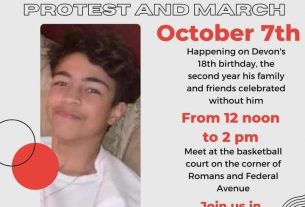**** CAF Media Release
Newfoundland soldier of the First World War identified

The Department of National Defence and the Canadian Armed Forces have identified the remains of Private John Lambert, a First World War soldier of The Newfoundland Regiment. Private Lambert died on August 16, 1917, at the age of 17. The Newfoundland Regiment is perpetuated by The Royal Newfoundland Regiment.
Private Lambert was born on July 10, 1900, in St. John’s, Newfoundland. On August 14, 1916, at 16 years old, he lied about his age in order to enlist with the Newfoundland Regiment and serve his dominion. He claimed on his attestation paper that he was 18 years and three-months old.
On August 28, 1916, he left for the United Kingdom aboard the S.S. Sicilian. He then travelled to Ayr, Scotland, for training where he joined the 2nd Battalion, The Newfoundland Regiment. On April 25, 1917, he landed in Rouen, France, and on June 7, 1917, proceeded to join the 1st Battalion, The Newfoundland Regiment in the field, which served with the 88th Brigade of the 29th Infantry Division of the British Expeditionary Force.
On August 16, 1917, the 29th Division had taken all of its objectives in what would be known as the “Battle of Langemarck.” Private Lambert died from wounds sustained in action during the advance of The Newfoundland Regiment.
His remains were discovered alongside three British soldiers during a planned archaeological dig conducted by THV MRG (a collaborative effort between the following four archaeological firms: Monument Vandekerckhove NV, Ruben Willaert NV, Gate Archaeology BVBA, and BAAC Vlaanderen BVBA) in April 2016, near Langemark, Belgium. A combination of historical and scientific research is used to identify remains and properly lay to rest those who made the ultimate sacrifice for Canada.
The Canadian Armed Forces have notified Private Lambert’s surviving next of kin, and are providing them with ongoing support. He will be buried at the earliest opportunity in a joint ceremony organized with the Joint Casualty and Compassionate Centre of the United Kingdom’s Ministry of Defence. He will be laid to rest in the Commonwealth War Graves Commission’s New Irish Farm Cemetery in West-Vlaanderen, Belgium. The British casualties found with Private Lambert are an unknown soldier of an unknown regiment, an unknown soldier of the Hampshire Regiment and a soldier of the Royal Inniskilling Fusiliers whose identities are still being investigated.
The Canadian Armed Forces’ Casualty Identification Program fosters a sense of continuity and identity within the Canadian Armed Forces. It provides an opportunity for the family, the unit of the fallen soldier, and all Canadians to reflect upon the experiences of the men and women who made the ultimate sacrifice for their country.
Quick Facts
- The Canadian Armed Forces’ Casualty Identification Program, within the Directorate of History and Heritage, identifies unknown Canadian service members when their remains are recovered so that they may be buried with their name, by their regiment, and in the presence of their family.
- The program also identifies Canadian service members previously buried as unknown soldiers when there is sufficient historical and archival evidence to confirm their identification. When that is the case, the previously unknown soldier receives a new headstone with their name, unit affiliation, and a personal family inscription, if that is requested.
- The Casualty Identification Review Board is composed of representatives of the Directorate of History and Heritage, the Canadian Forces Forensic Odontology Response Team, the Commonwealth War Graves Commission, and the Canadian Museum of History. The Rooms, Newfoundland and Labrador’s provincial archives, assisted with some of the historical research for this case.
- The Commonwealth War Graves Commission commemorates the 1.7 million Commonwealth servicemen and women who died during the two world wars. Using an extensive archive, the Commission works with their partners to recover, investigate, and identify those with no known grave to give them the dignity of burial and the commemoration they deserve.
- The Joint Casualty and Compassionate Centre (JCCC) is the United Kingdom’s equivalent of the Casualty Identification Program. A collaborative effort between both organizations led to the identification of Private Lambert’s remains.



